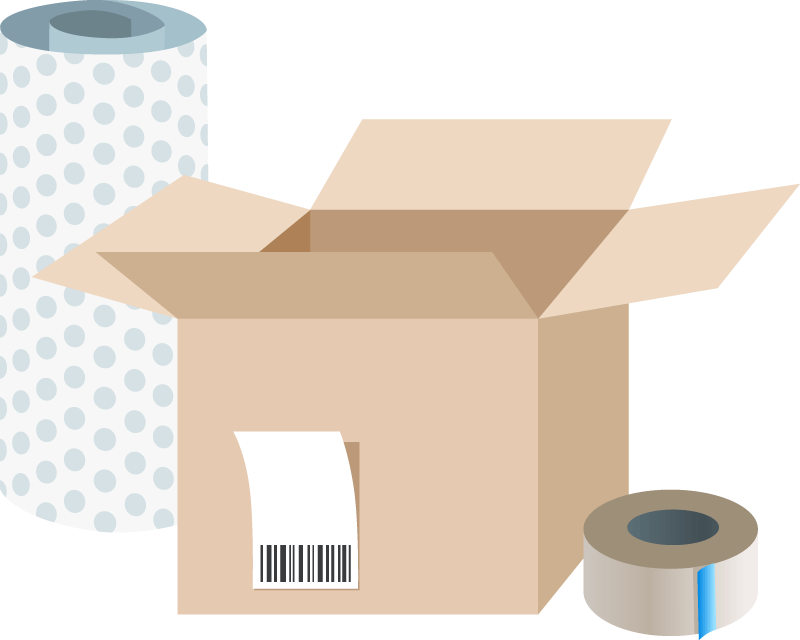What Makes a Strong E-Commerce Brand Strategy
Building an e-commerce brand starts with a strategy — a clear understanding of your business’s purpose, values and target audience. A well-crafted strategy acts as your north star, guiding every visual decision you make, from your logo to the tone of your Instagram captions.

One of the most overlooked elements is consistency. When your website looks one way, your packaging another and your social content something else entirely, your brand identity starts to feel fragmented at best. Consumers want to know what to expect from you, and consistency creates that trust.
Equally important is defining your brand personality. Are you bold and playful or elegant and refined? That tone should reflect not just in your copywriting but also in your colors, fonts, and photo style. Having a distinct identity helps you stand out and scale. With a solid e-commerce branding strategy in place, your visuals can work harder for you, doing the heavy lifting of customer engagement, retention and even upselling.
Why Visual Identity Is a Key Part of E-Commerce Branding
Your visual identity is your digital first impression. In the world of e-commerce branding — where shoppers can’t physically touch or feel your product before purchase — your logo, color scheme, typography and imagery become the stand-ins for that tactile experience. They tell your story at a glance, set expectations and foster trust.
Color alone increases brand recognition by up to 80% on sight. Think about how instantly recognizable Tiffany blue or Amazon’s smile logo is — they’ve become shorthand for a complete experience.
However, a great visual identity doesn’t stop at the online branding. It flows through your social media, digital ads, packaging and even your shipping labels. Every touch point reinforces what you stand for and signals to your audience that your business is credible, cohesive, and consistent.
How Visual Branding Impacts the Online Shopping Experience
If you’ve ever clicked away from an online store because something felt off, you’ve experienced the power of visual branding. When done well, it puts shoppers at ease and makes every step of their journey feel intentional and trustworthy.
A clear, cohesive visual identity tells buyers they’re in good hands. It guides them seamlessly through your website, reassures them that your business is legitimate and subtly encourages them to convert. From intuitive navigation to well-designed product pages, your visuals either enhance or undermine your user experience.

E-commerce branding continues with your packaging, unboxing and delivery. That’s where platforms like Chit Chats come in, helping Canadian businesses create branded shipping experiences that feel personal, not transactional.
With tools such as the Chit Chats Upselling tool, you can showcase your brand and encourage additional purchases–even in unexpected places, like within your customers’ order tracking page! However, there are additional options such as including custom thank-you cards and packaging within your packages that align with your aesthetic to transform a delivery into a moment that delights.
Common Mistakes to Avoid When Building an E-Commerce Brand
When building an e-commerce brand identity, it’s as much about what you avoid as what you add. Many small business owners unintentionally fall into common traps when building an e-commerce brand. One major one is inconsistency.
If your logo, tone or color palette shifts across different platforms, your audience won’t form a strong mental image of your brand. Consistency builds recognition, and recognition builds trust.
Another pitfall is designing based on trends instead of strategy. Just because minimal beige aesthetics are popular doesn’t mean they’ll connect with your audience. Your visual choices should reflect your values, not just your Pinterest board. Find what your audience loves and market for that.
Another branding blunder is overlooking mobile responsiveness. In a mobile-first world, your imaging needs to look just as sharp on a phone screen as it does on a laptop.
Finally, skipping a brand style guide can lead to chaos as your team or future collaborators try to replicate your look and feel. A little upfront structure will save you from long-term headaches.
How to Build a Memorable Visual Identity
Whether you’re just starting out or rebranding an existing store, developing your visual identity doesn’t have to be overwhelming. Here’s a simple step-by-step process to help you build something that resonates:
- Clarify your brand mission and voice: Start by writing down what your brand stands for. Are you eco-conscious? Luxury-focused? Youthful and edgy? This will shape your visual decisions.
- Choose your color palette: Colors communicate emotion fast. Choose two to four primary colors and stick with them.
- Select typography that reflects your personality: Font choice says a lot — sleek, sans-serif fonts suggest modernity, while serif fonts can feel classic or elegant. Make sure your fonts are legible across devices.
- Design your logo and supporting graphics: Your logo is the face of your brand. Use tools like Canva or Looka or work with a designer to create something versatile for packaging, labels, and your online storefront.
- Apply branding across every touch point: Your visuals should feel united from your homepage to your delivery slip. Even your product photography and social posts should echo your brand’s tone. You can also extend your branding to upselling and shipping experiences. Chit Chats’ new upselling tool allows you to present custom offers that align with your branding, giving customers a cohesive and seamless buying journey.
Packaging, Shipping and Branding Touchpoints
Many small businesses spend weeks perfecting their website and social media aesthetics, then send out orders in generic, unbranded packaging. That’s a missed opportunity. Branding doesn’t end at the “Thank you for your order” page — make your shipping materials part of the full brand story.

Packaging is one of the few physical interactions people have with your brand. Done right, it can surprise, delight and turn first-time buyers into repeat ones. A custom thank-you note, branded tape or a sticker in your brand colors can make an impression without breaking the bank. In the age of unboxing videos and social sharing, great packaging is great marketing.
When it comes to delivering that visual identity affordably and reliably, Canadian sellers have a unique edge with services like Chit Chats. Its platform lets you ship across Canada and internationally while keeping costs low, so you can reinvest in things like branded inserts or custom labels.
Make a Brand Name for Yourself
Your visual identity does more than make things pretty — it makes your brand more memorable. If you need help delivering a seamless experience from storefront to doorstep, Chit Chats makes it easy for Canadian e-commerce companies to ship smarter and stay on brand.
Author Bio
Known for his expertise in industry dynamics, Jack Shaw serves as the editor of Modded. Through his insightful analysis and practical advice, Jack seeks to empower readers with the knowledge to thrive in the ever-evolving corporate landscape, guiding them toward success in their professional endeavors.
